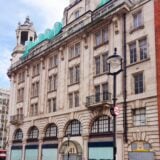Improved mortgage lending has also boosted the market and young professionals in particular leading an increase in property sales, according to the latest analysis report from Savills.
It singles out Glasgow’s West End, specifically Hillhead, Dowanhill, Hyndland, Kelvinside, Claythorn and Jordanhill, as seeing growth that has outperformed other locations.
The Savills research shows that the average sale price across the West End reached £266,455 during the year ending in March 2014, some 109% higher than the average sale price across the Glasgow City Local Authority area as a whole over the same period.
There was also a 5% increase in the number of transactions while the number of sales across the Glasgow City Local Authority area as a whole is currently 23% below the 10 year average. However, the residential activity across Glasgow’s West End is only 12% below the 10 year average.
At the top end of the market, there were five residential transactions in the West End at £1 million and above. These were the first such sales in this price band in this location since 2012.
According to Faisal Choudhry, associate director of residential research at Savills in Glasgow, the market is increasingly being driven by younger professionals aged from 30 to 39, comprising around 40% of Savills sales last year.
‘This target market had been somewhat subdued following the housing market downturn, mainly due to affordability issues. However, there was an ever present pent up demand among this age category aspiring to upsize. This age group is now more active and is enabling the whole of the market to move again following low levels of sales during 2011 and 2012,’ he explained.
A closer look at key neighbourhoods shows that the bulk of sales activity took place in the strongholds of Dowanhill and Hyndland, accounting for 45% of residential transactions in the West End. The market in these areas has remained healthy with a 10% rise in sales and a 5% increase in the average price. Dowanhill and Hyndland are equally popular with first time buyers, professionals, families and downsizers.
The market in the Kelvinside neighbourhood was subdued during 2012, but has since made a remarkable comeback with annual sales increasing by a staggering 49% and the average price rising by 10%. Families and upsizers are particularly attracted to Kelvinside due to the availability of larger houses.
The Park Area continues its transformation into an exclusive residential neighbourhood with strong selling prices while residential activity in the Hillhead neighbourhood, which is dominated by students, fell last year due to a lack of supply. However, the average price last year was similar to the 10 year average.
The market in the Claythorn neighbourhood has remained steady. The residential market in the Jordanhill area had a challenging year in terms of activity. This market is heavily influenced by placement issues surrounding Jordanhill School. However, the average price in this area was almost the same as the 10 year average.
‘Looking ahead, we expect transactions across Glasgow’s West End to grow in line with Scotland as whole, supported by government incentives and a gently improving economy,’ said Choudhry.
‘We expect residential values across Scotland and the prime areas of Glasgow’s West End to continue their positive upward trend over the next five years, with stronger growth predicted in the event of a possible No vote majority in this September’s Scottish Independence Referendum,’ he added.




